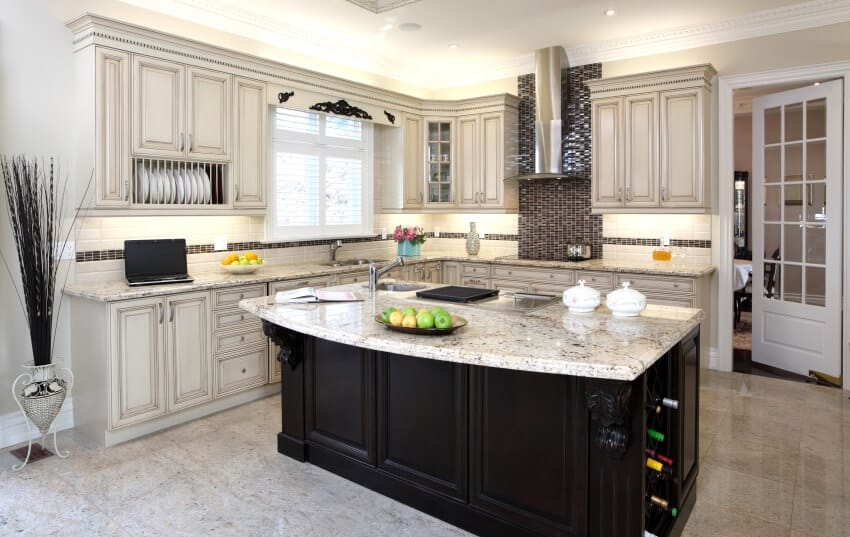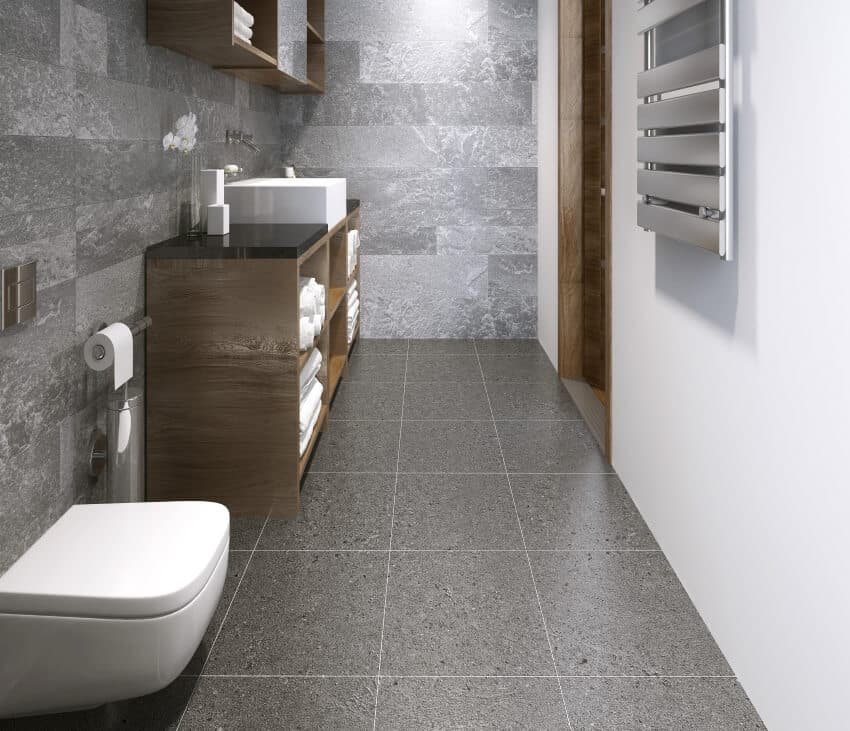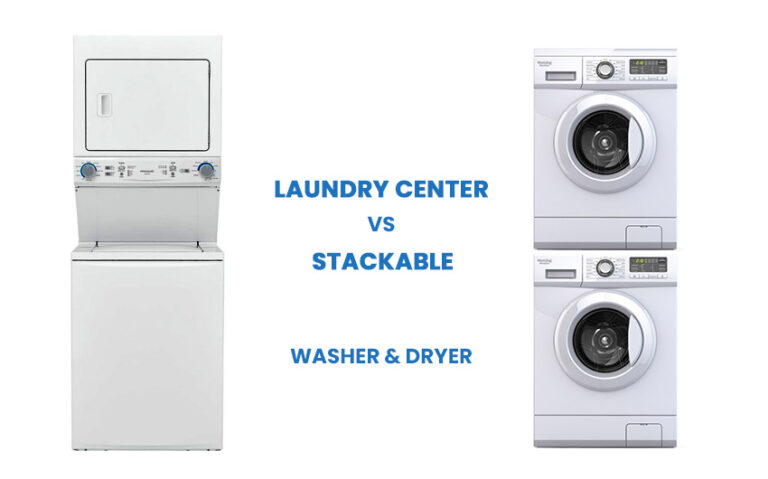5 Simple Steps To Keep Your Granite Tile Floors Looking New

Although the flooring is extremely durable, it can lose its luster after some time due to daily wear and tear. The key to keeping them looking good is to clean them regularly using the right products and the right methods. Below are some of our practical tips for cleaning such floors.
How to Clean Granite
Cleaning stone floors is easy, and all you need are simple tools and materials to keep them looking their best on a daily basis.
Things You’ll Need
- Warm water
- Mild detergent or dishwashing soap
- Natural Stone Cleaner
- Bucket
- Soft cotton cloth or microfiber cloth
- Mop
- Soft bristle broom, vacuum or dry dust mop
Steps for Cleaning Granite Floors (Regular Maintenance)
1. Sweep to remove dust, dirt, and debris. Clean and clear the floor of any dust using a vacuum, soft bristle broom, or dry dust mop.
2. Prepare a cleaning solution. In a bucket, mix some warm water with a mild detergent. You can use 3 to 4 drops of dishwashing soap with a gallon of water.
3. Mop the floor in sections. Dampen a soft cloth or mop with your chosen cleaning solution, and make sure to wring out the mop to remove any excess water. Mop the floor gently.
4. Rinse the floor. Fill another with some clean water. Grab another soft cloth, soak it in the bucket, and squeeze out any excess moisture.
Wipe the floor to remove any soap residue. Liquid soap can leave behind a thin layer of residue, and over time, this layer gets thick enough to dull the floor surface so make sure to rinse them well.
5. Dry the floor. Polish dry the floors with a microfiber cloth. Make sure to cover all the spaces. Do not leave the floor to air dry because watermarks may form.

Daily Upkeep
• Sweep or dust on a daily basis to keep dirt, pet dander, dust, and other debris from building up on your floor.
• Vacuum regularly to remove any dirt stuck in between the tiles.
Weekly Cleaning
• Always use warm water and a soft mop or cloth. Make sure to wipe with a dry cloth to remove any excess water from mopping.
• Mop at least once to twice a week. Use a damp, well-wrung cloth or mop to clean these floors weekly.
Monthly Deep Cleaning
• Deep clean on a monthly basis. Even with daily cleaning, dirt can still build up over time, especially in high-traffic areas, so you need to deep clean these floors at least once a month to keep them looking their best. Use a homemade solution of baking soda mixed with warm water or a ready-made natural stone cleanser.
Periodic Maintenance
• Apply sealer and reapply periodically. It is a natural stone, so it must be sealed as a flooring material because it is susceptible to moisture damage. Make sure that upon installation, apply a penetrative sealer and reapply it once every year to give it added protection and a glossy shine.
• Check for cracks and chips – Regular checks need to be done on this flooring to examine it for cracks and chips. For tiles, make sure that the grout is intact. If you see any damage, make sure to repair it immediately, and do not wait for the flooring to crack.
What to Avoid and Tips
• Avoid using abrasives like a steel wool brush, scouring pad, rough sponge, or scrubber because they can leave permanent scratch marks.
• Wipe spills immediately with a paper towel or microfiber cloth. Prevention is key to keeping any flooring from looking its best. Although it’s not as porous as other natural stone surfaces like marble, liquids like red wine, soda, or coffee can leave permanent stains on the floors when left too long on its surface.
• Use cleaners that are recommended for these floors.
• To minimize the risk of future marks and damage, use a protector under plant pots to prevent water stains.
• Do not use vinegar, bleach, hydrogen peroxide, or glass cleaner to clean flooring stains. These substances can eventually weaken the sealant and may dull the surface over time.
• Steer away from products that contain dye because the dye can transfer to the stone.
Best Granite Cleaners

You can find ready-made floor cleaning solutions in local hardware stores and home depots, but alternatively, you can make one at home using common household items. Below are some of the best floor cleaners you can use to keep your floors looking new, shiny, and hygienic.
• Best Homemade Cleaning Solution – The most recommended cleaning solution is simple and super easy to make. All you need is to mix mild dish soap with warm water.
You can also use this to clean spills that cannot be removed by water alone. This solution works best in cleaning stone floors, but it can’t help in keeping them shiny and polished.
• Floor Polisher – Mix ¼ cup of baking soda and 3 cups of water or 1 cup of rubbing alcohol and 3 cups of warm water with a few drops of pH-balanced soap. Apply it with a soft cloth, wipe clean, and polish your floors with a dry microfiber cloth.
• Stone Cleaning Products – A suitable disinfectant cleaner that is sodium-hypochlorite based can be used to keep such floors hygienic. An example of this is Domex Floor Cleaner®. Make sure to follow the instructions on the label before use.
• pH Neutral Cleaner – pH-neutral cleaners also work best for these floors because they leave behind a streak-free finish that allows the natural sheen of the natural stone to shine through. One of the best pH-neutral cleaners in the market is Simple Green Multi-Surface Floor Care®.
• Stain Cleaner – Mix some baking soda and warm water to create a paste and apply to the stain.
How to Clean Granite Stains

There are several cleaning products you can use to remove stains on stone floors, some of which you can even make at home.
Things You’ll Need
• Warm water
• Mild detergent or dishwashing soap
• Baking Soda
• Bucket
• Soft cotton cloth or microfiber cloth
Steps for Cleaning Floor Stains
1. Prepare a stain remover. Make a stain remover by mixing baking soda with a little bit of water. The consistency should be paste-like.
2. Apply the paste to the stained area and cover it with a plastic wrap. Tape down the edges so it doesn’t get removed.
3. Leave the paste to dry overnight. In some cases, you might need to leave the paste covered for a couple of days, especially in an active household.
4. Clean the paste. Dampen a soft cloth with some water and rub the stained spot in straight lines. Do not scrub in circular motion, and do not use a scrubber.
5. Buff the area. Once the stain is removed, gently wipe the area with a clean, damp cloth. Make sure to wipe until the area is fully dried.
Check out our granite kitchen countertops pros and cons guide for more related articles.






